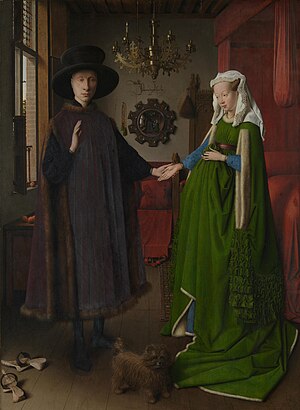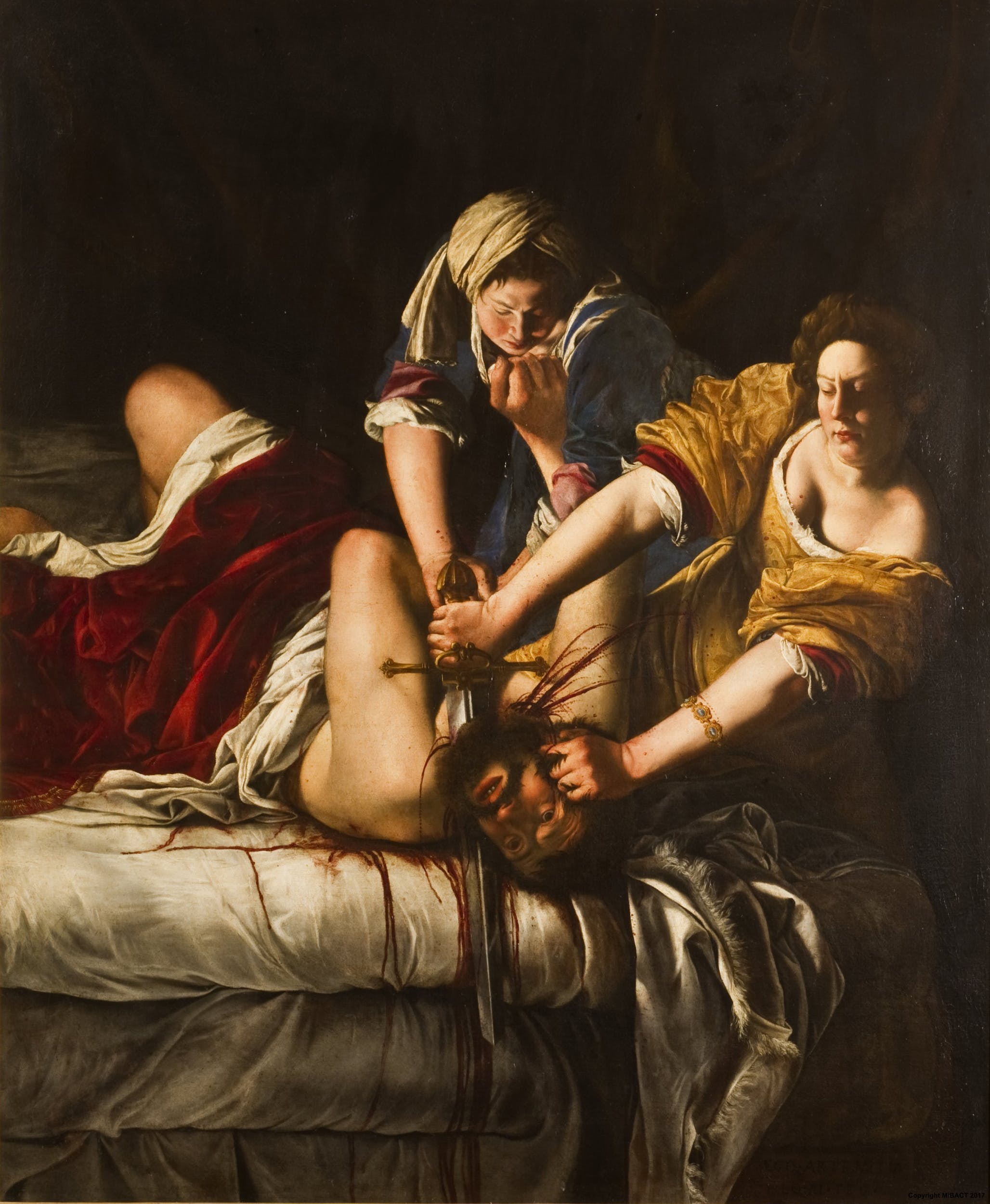 |
| Michelangelo, Pietà (1498-99) |
Michelangelo Buonarroti (1475-1564) was an Italian Renaissance sculptor, painter, architect, poet, and one of the most well-known artists of the Renaissance and perhaps of all time. ("Michelangelo, his Paintings, and Sculptures") As a young artist, Michelangelo began practicing fresco paintings and studied drawings of Classical monuments, reflected in his later works David and paintings of the Sistine Chapel ceiling. (Stokstad & Cothren, 658) His first pivotal piece of work was a marble sculpture of the Pietà, which has been commissioned by a French Cardinal Jean de Bilhères and was later used as a tomb monument in Old St. Peter’s. The sculptor depicts a dead Jesus laying in the lap of the Virgin Mary. Michelangelo depicts the Virgin as younger and physically much larger than she would typically be displayed, and out of scale with the fallen Christ she holds. We can see the attention Michelangelo has paid to the human physique through the immense details in chiseled musculature and veins. Known to travel to the marble quarries at Carrara in search of a block for his work, Michelangelo has said he “envisioned the sculpture was already existing within the marble, needing only his tools to set it free.” (Stokstad & Cothren, 658)
Jan van Eyck (before 1395 - before July 9, 1441) was a 15th-century Early Netherlandish painter active in Burgundy. ("Jan van Eyck or Johannes de Eyck") Van Eyck became the court painter for Duke Philip the Good of Burgundy in 1425, and in addition to commissioning works of art for him, van Eyck served as a diplomat for Duke Phillip. (Stokstad & Cothren, 587) Eyck is credited with several amazing works, including the Ghent Altarpiece housed in the Cathedral of St. Bavo in Ghent. (Stokstad & Cothren, 588) However, he is probably most well known for his Double Portrait of Giovanni Arnolfini and His Wife. Featured in this painting are wealthy Italian textile merchant Giovanni Arnolfini, and who most historians believe to be his wife. During its time, this painting was considered revolutionary and its existence demonstrates a shift in both political and cultural power. Before this, the Catholic Church remained the primary source of power and knowledge and was the only entity financially able to serve as patrons for creative workers. This meant that most artworks were commissioned for the church, and the subject of most works was spiritual in nature. However, Arnolfini depicted the influence that up-and-coming wealthy merchants could wield. This set the stage for similar paintings — those featuring more secular subjects and the ego of man.
 |
| Jan van Eyck, Double Portrait of Giovanni Arnolfini and His Wife (1434) |
| Albrecht Dürer, Self Portrait (1500) |
Albrecht Dürer’s (1471-152) Self Portrait serves as a perfect illustration of the rise in artists who began to feature themselves in their works during the Middle Ages and into the Renaissance. (Stokstad & Cothren, 691) Dürer paints himself in the likeness of Jesus Christ, referencing images of Christ as Salvator Mundi. (Stokstad & Cothren, 691) In addition to the Salvator Mundi being extremely popular and recognizable in northern Europe at the time, existed the practice among Christians of attempting to imitate Christ in their own lives. With this painting, Dürer manifests this spiritual pursuit and also references the biblical notion that all human beings are created in the image of God. (Stokstad & Cothren, 691) Dürer does a fantastic job of incorporating aspects of Northern European art into this painting, namely in the depth of detail and surface texture he works in. In addition to the central figure’s gaze, we are drawn in by “the soft sheen of human flesh, the reflective wetness of eyes, the matte softness of cloth, and the tactile quality of hair, emphasized here by the way Dürer’s hand fingers his fur collar, encouraging viewers to feel it as they see it.” (Stokstad & Cothren, 691)
 |
Artemisia Gentileschi, Judith Beheading
Holofernes (1614-18)
|
Works Cited
“Jan Van Eyck or Johannes De Eyck.” Jan Van Eyck - The Complete Works, http://www.jan-van-eyck.org/.
“Michelangelo, His Paintings, and Sculptures.” Michelangelo Paintings, Sculptures, Biography, https://www.michelangelo.org/.
Stokstad, Marilyn, and Michael Watt Cothren. Art History. Pearson, 2018.
No comments:
Post a Comment